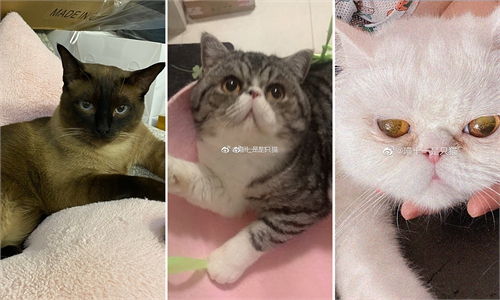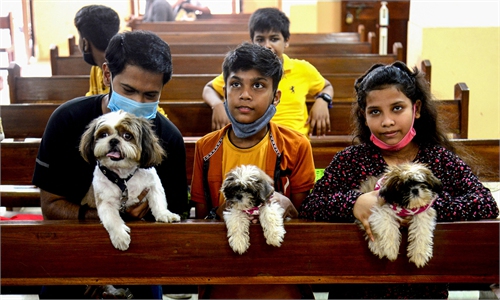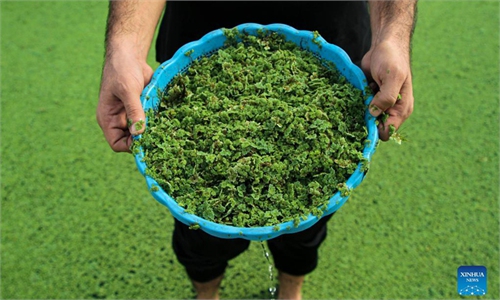ARTS / CULTURE & LEISURE
The ‘marriage’ problem of endangered Przewalski's horses awaits solution
Video: GT
After the gate opens, the 43 mare "beauties" of "marriageable" age did not rush into the green semi-wild area, but rather squeezed together into a large group next to the steel pipe fence of the wild horse training grounds as they were still indulging in their entanglement with stallion Jungar No.226, leader of a breeding herd that was about to be released into the wild.For days, these young "princesses" had been fighting over more than a dozen "princes" who were about to return to nature. Compared with the tasty food and the wider world outside the big fence, love has the far stronger pull, making them even more inseparable.
This kind of "polygamous" horse is an endangered species - Przewalski's horse. With an evolutionary history of more than 60 million years, it is believed to be the only truly wild horse species in existence today.
It is listed as endangered by the International Union for Conservation of Nature Red List of Threatened Species and is under first-class national protection in China.
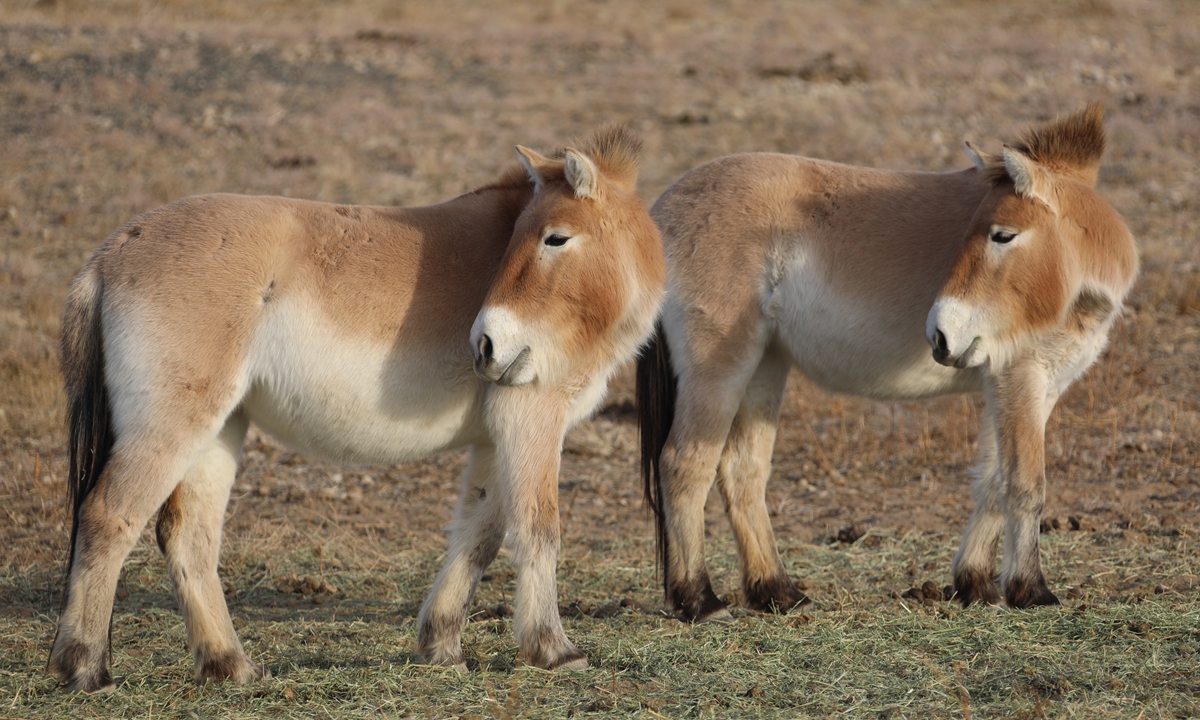
Przewalski's twin horses Photo: Courtesy of Zhang Hefan
A long and loving companionshipPrzewalski's horses are even rarer than giant pandas as approximately only 2,000 survive in the world.
Once extinct in China due to excessive poaching and environmental degradation, China started reintroducing Przewalski's horses from the UK, the US and Germany in 1985, mainly raising the precious creatures in Northwest China's Xinjiang Uygur Autonomous Region.
On August 28, 2001, China successfully returned the first group of Przewalski's horses to the Kalamaili Ungulate Nature Reserve in Xinjiang. Zhang Hefan, a senior engineer who has been working at the Przewalski's horse breeding center in Xinjiang since 1995, told the Global Times that a total of 18 Przewalski's horses were sent to the Kalamaili reserve in September.
These horses will be officially released into the wild after they adapt to the environment at the wildlife release site of the Kalamaili Ungulate Nature Reserve.
Having worked to conserve Przewalski's horses for over 25 years, Zhang said she treats the animals as her own children. She has continued tracking, observing and recording the stories of Przewalski's horses and their protectors through photography, videos and writing.
"There are so many touching and interesting stories about these adorable wild horses," Zhang said, going on to recall a recent exciting experience in which she witnessed the birth of twin Przewalski's horses, which she is convinced are the first recorded Przewalski's twin horses in the world.
"It is rare to have two foals, as Przewalski's horses usually only produce one foal per birth," said Zhang, adding that it was very interesting since her colleague also has a cute pair of pigeons who have accompanied the twin horses as they've grown.
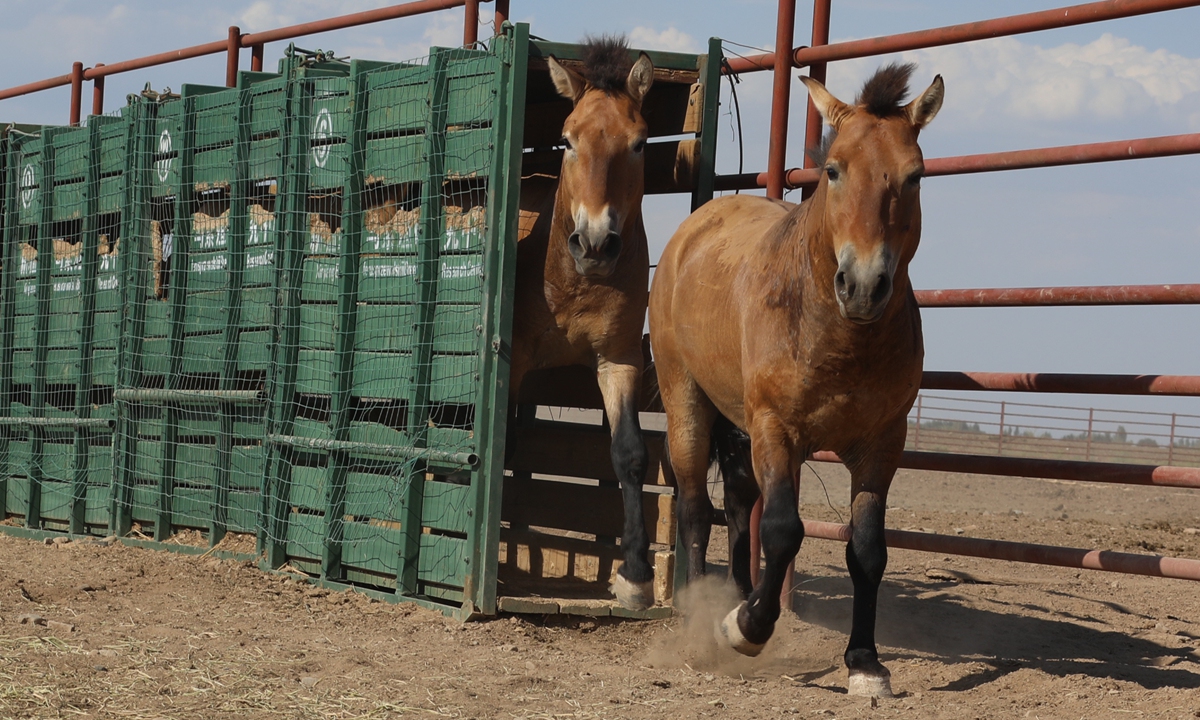
Przewalski's horses Photo: Courtesy of Zhang Hefan
Increasing number
According to Zhang, three of the 43 mares were lucky enough to be selected for release into the wild in Kalamaili in 2021, the 20th anniversary of the release project in Xinjiang. Before their departure, they have undertaken a month-long "boxing" training.
The research center began "boxing" training for the wild horses in August 2020. The training involves guiding the horses to enter boxes by luring them with forage grass and reducing their fear of the horse box, which will be used to transport them back to the wild.
"We put radio collars on the wild horses to track them, so we can further understand the wild horses' life and migration patterns and to prepare for their expansion in the future," Yang Jianming, director of the Xinjiang Wild Horse Breeding and Research Center, told the Global Times.
He added that after more than 30 years of hard work, the Xinjiang Wild Horse Breeding and Research Center has successfully bred over 800 wild horses across six generations, making it the largest breeding base for Przewalski's horses in the world.
By 2020, the number of Przewalski's horses in Xinjiang had grown to 484, including 274 horses in the wild, 113 horses in semi-captivity and 97 horses in captivity, according to the Xinjiang Wild Horse Breeding and Research Center. The Kalamaili reserve had 274, 10 times the number in 2001.
According to Yang, the number of Przewalski's horses needs to reach about 2,500 to form a stable population in the wild. Through more than 30 years of development, the "Wild Horse Returning Home" Project has accumulated a lot of experience when it comes to releasing the animals and has provided a good reference and model for the reintroduction of other species in China.
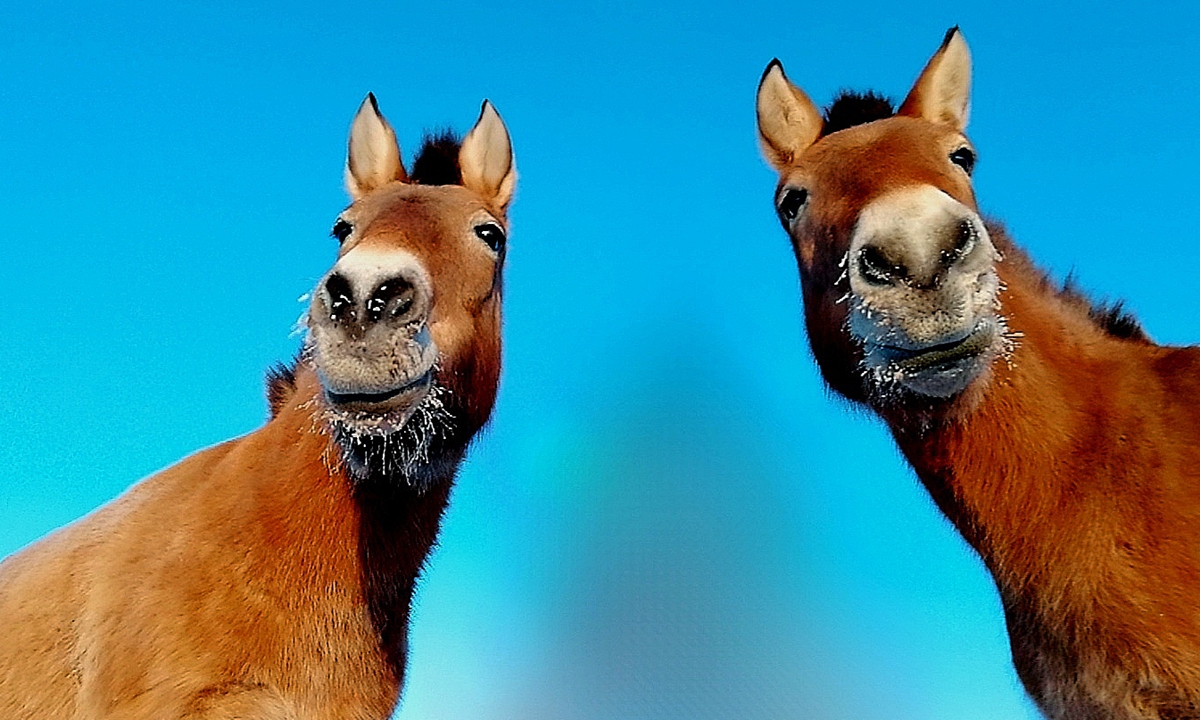
Przewalski's horses Photo: Courtesy of Zhang Hefan
Inbreeding issues
According to Yang, the selection of this batch of wild horses mainly considered the horses' pedigree relationships, age structures, sex ratio and health status.
The 18 wild horses are more distantly related to the wild horses that have been released into the wild, which helps to reduce problems related to inbreeding in the horse herd.
But he noted that avoiding inbreeding has become quite challenging as introducing foreign genes into the species is temporarily impossible due to the global pandemic.
The center has sought international cooperation with many countries and organizations.
"We planned to invite some US experts to help artificially inseminate the wild horses in China, but COVID-19 has put roadblocks for this work," said Yang.
Currently, the Xinjiang Wild Horse Breeding and Research Center is actively looking for suitable domestic wild horse sources from Northwest China's Gansu Province and other places to solve the problem through provincial exchanges.
"We are also negotiating with a company based in Beijing about a project to clone Przewalski's horses," said Yang.
"If attempts were successful, the marriage problem of the 'leftover' wild horses could be solved," said Zhang.

